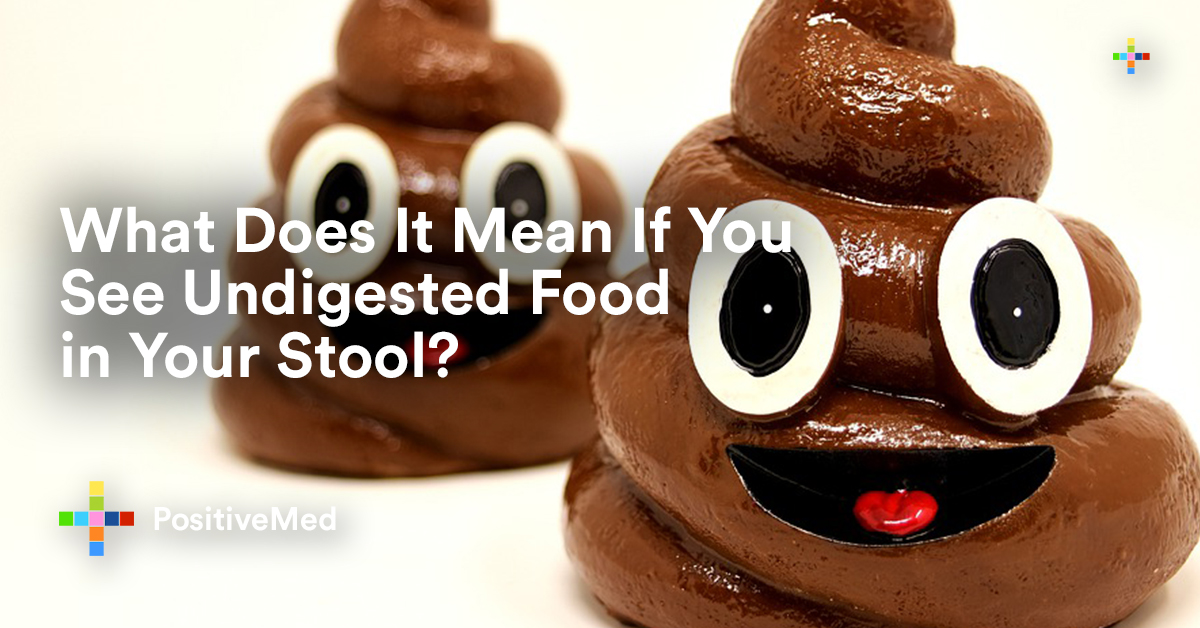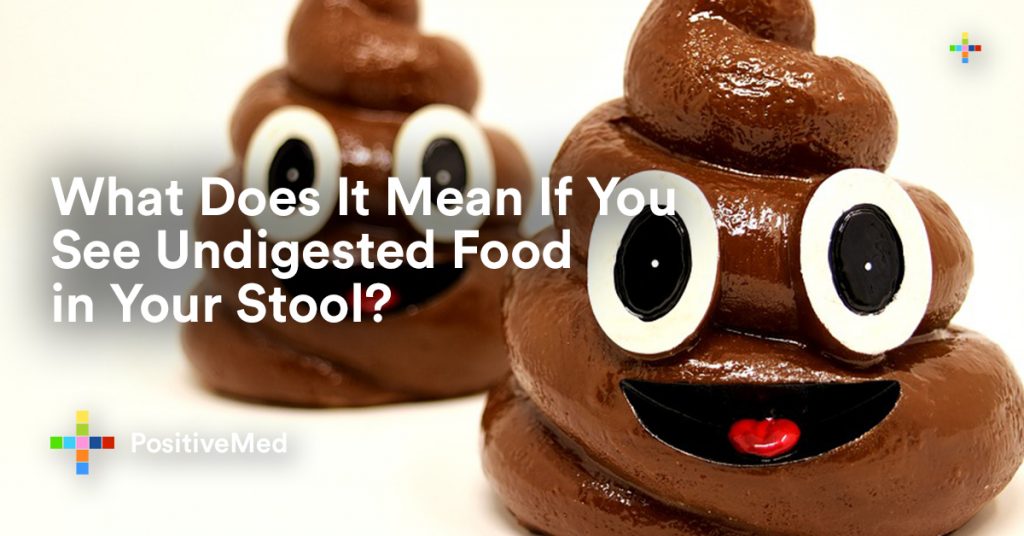The appearance of one’s stool can tell a lot about that person’s health. Not only can it give information about how the digestive system is functioning, but it can also help you to know if you are eating enough of the right foods. Taking a peek at your stool can help give some insight into your health, especially if you find some undigested food still intact.

There is no true “normal” when it comes to stool consistency. With such a large variety of textures and forms, it is hard to pinpoint one as being the most normal. However, seeing undigested food in the stool does not necessarily mean that something is wrong. Many foods are indigestible and just come out whole.
Normally, the bacteria in the human body is able to break down food pieces before they exit the body. However, if you eat very quickly without completely chewing your food, it may come out whole on the other end.
Some of the most common foods that end up coming out whole in the stool are peanuts, corn, beans, and carrots. However, if you begin to see undigested food regularly in your stool, this may be a sign that something is wrong. This may mean that your body is not absorbing the essential nutrients that the food is trying to give because it passes through the body so quickly.
Food can pass through the intestinal tract at varying levels of speed. This depends on several factors. It typically takes around 3 hours for half of the stomach contents to move on into the intestines, and two additional hours for the stomach to completely empty. The small intestine then empties 50% of its contents in about 3 hours, and then food takes 16-40 hours to move through the colon. If your diet is rich in fiber, the transit time may be shorter.
RELATED ARTICLE: What Does it Mean When Your Poop Floats?
If you are finding that you have more whole foods in your stool than normal, start taking a probiotic or eating more yogurt. Also, add fiber and water to the diet to help flush out the system. Another way to assist your digestive system in working optimally is to eat smaller meals throughout the day rather than three large meals. This helps with digestion because our intestines prefer to be constantly active. Also, make sure you are chewing your food completely. This leaves less work for your intestines to do once the food reaches them.
Chewing foods is also beneficial as it helps the nutrients be absorbed through the intestines. This can prohibit improperly digested food from entering the bloodstream, which could have negative side effects on your health.
Recent research has shown that when people chewed almonds longer, the body was able to absorb the smaller particles better and faster. People who chewed less, however, had the larger pieces pass through the body without being absorbed, which also gave bacteria and fungi an opportunity to fuel up during their transit.
Improving stomach acid is another way to help your body break down foods. This acid helps your body release digestive enzymes that are needed to break down food. In addition to eating raw foods, more ways to improve your stomach acid are to drink acidic beverages such as warm lemon water or apple cider vinegar. This can be done twenty minutes prior to eating to prep your stomach for food.
Finding whole foods in your stool may be a sign that is something wrong, but it can also be perfectly normal. Gauge how often this is happening and what types of food you are finding before reaching out to a doctor. Slow down when you’re eating to assist your body in digestion.






